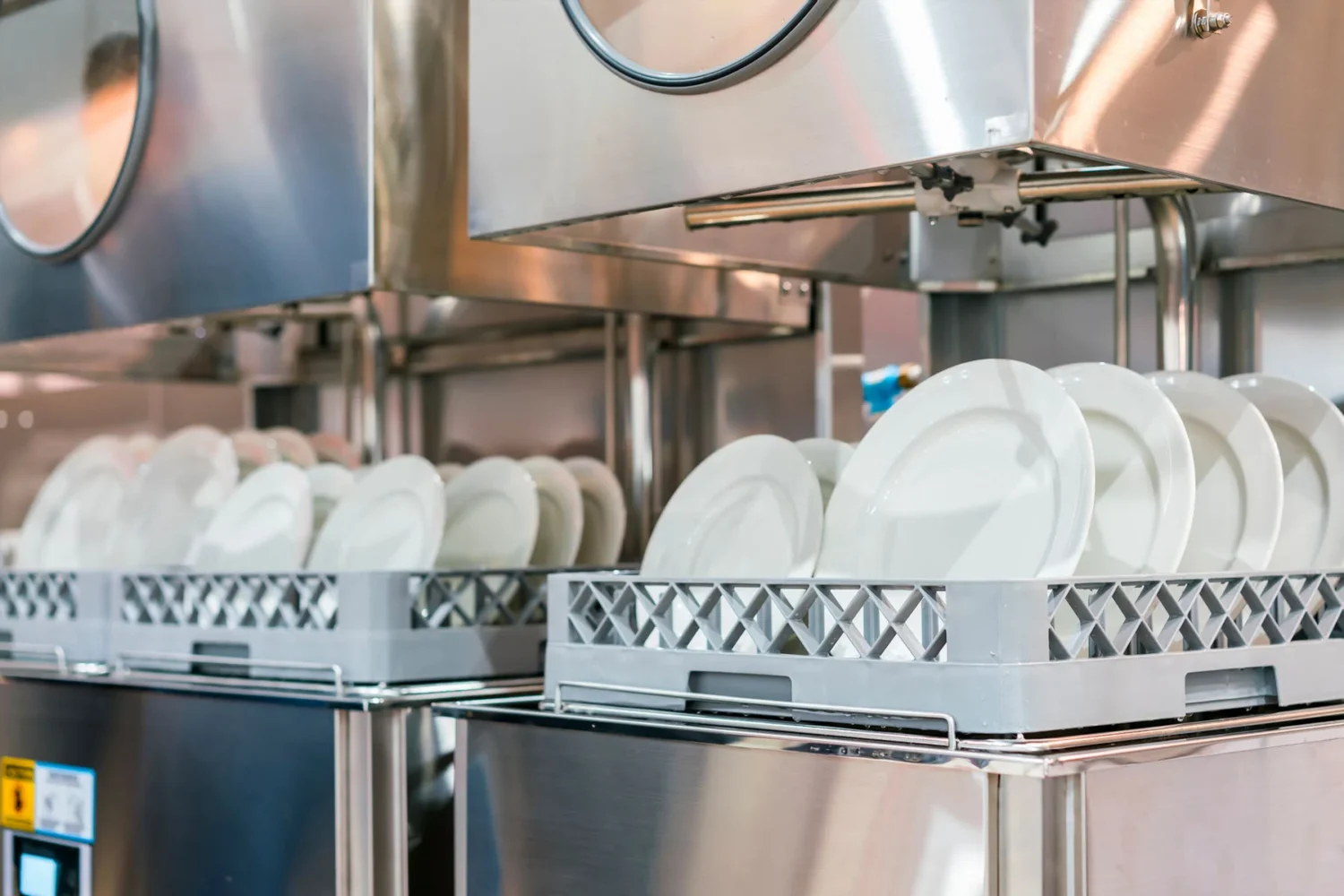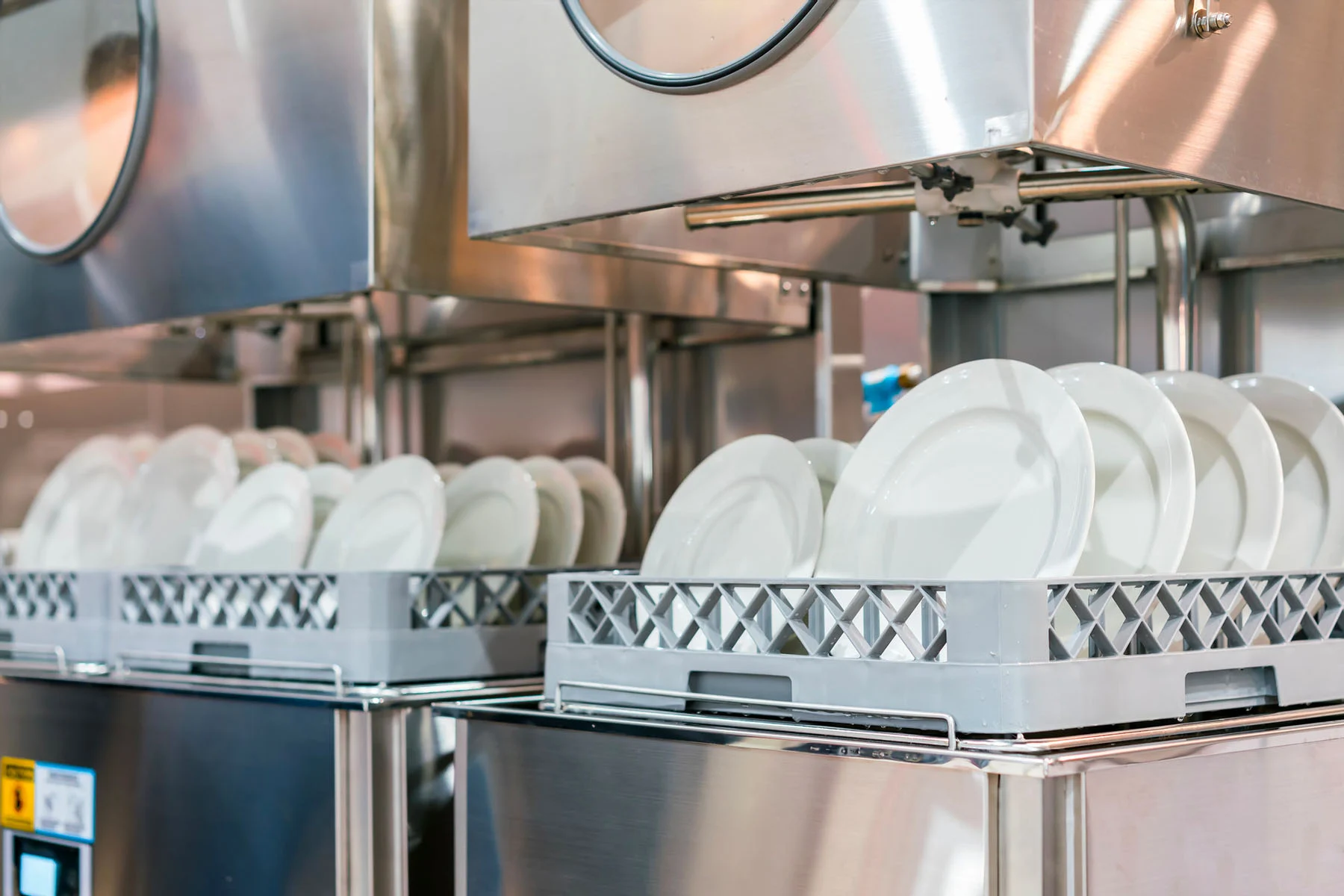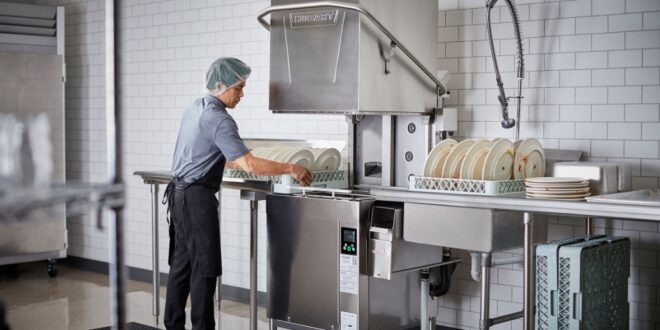Cleanliness is paramount in the restaurant business. Not only is it essential for health and safety regulations, but it also has a direct impact on a customer’s dining experience. In a world where first impressions matter, a spotless dish can make or break a restaurant’s reputation.
At the heart of this cleanliness regime lies the humble dishwasher. This blog post aims to serve restaurant owners by delving into the nuances of using dishwashers effectively, ensuring dishes sparkle every time.
1. Choosing the Right Dishwasher
The kitchen is the heart of any restaurant. Just like selecting the right chef, choosing the ideal dishwasher is crucial for efficient operations. Dishwashers come in various shapes and sizes:
- Under-counter dishwashers ─ Suitable for smaller restaurants or bars, they fit seamlessly under counters, similar to home models.
- Conveyor dishwashers ─ Perfect for medium to large-scale restaurants, these can handle hundreds of racks per hour.
- Flight-type dishwashers ─ Tailored for high-volume establishments like cafeterias, these machines in combination with a dishwasher deodorizer can process vast amounts of dishes quickly.
When deciding, consider the size of your establishment, daily dish volume, and available space. Always ensure it meets health and safety standards while being energy and water-efficient.
2. Staff Training
While machines play their part, human intervention is vital. Staff training in dishwasher operation is indispensable. Employees should understand machine functionalities, know when to intervene, and be aware of the various cycle options.
Proper training prevents cross-contamination, ensures hygiene standards, and maintains the longevity of the machine. The efficiency of a dishwasher is only as good as the people operating it.
3. Pre-Scraping and Pre-Rinsing

Before any dish sees the inside of a dishwasher, pre-scraping and pre-rinsing play crucial roles. Ensure leftover food residues are removed to prevent dishwasher clogs. This step not only guarantees cleanliness but also enhances the efficiency of the dishwasher. Remember, a dishwasher is designed to clean, not to dispose of large food particles.
4. Proper Loading Techniques
The mantra here is simple ─ position, space, and balance. Dishes should face downward and inward. Utensils should be mixed – forks with knives and spoons, ensuring they don’t nest. Glassware belongs on the top rack, placed between the tines, not over. Avoid overcrowding; it hampers water circulation, leading to spotty results.
5. Selecting the Right Detergents
The market offers an array of detergents—liquids, powders, tablets. Your choice matters. Consider the water hardness in your area, type of dishes, and dishwasher specifications. While commercial-grade detergents are potent, there’s a rising wave of eco-friendly alternatives that are equally competent. Research, test, and then decide.
6. Monitoring Temperature and Water Pressure

Temperature and water pressure are the unsung heroes of cleanliness. Typically, dishwashers should maintain a temperature of 150°F for washing and 180°F for sanitizing. Water pressure, on the other hand, ensures efficient detergent usage and effective rinsing. Regularly monitoring these parameters ensures consistent results and minimizes wear and tear.
7. Regular Maintenance and Cleaning
A dishwasher, like any machine, demands care. Regular maintenance, including cleaning filters, checking spray arms, and inspecting interior surfaces, is mandatory. Monthly de-scaling can prevent mineral build-up. A well-maintained dishwasher not only cleans effectively but also enjoys a longer life.
8. Inspection and Quality Control
After the washing cycle, it’s time for a thorough inspection. Check dishes for any residue, water spots, or stains. Ensure cutlery is free from grime. A diligent inspection routine maintains consistent cleanliness standards, ensures customer satisfaction, and upholds the restaurant’s reputation.
 Hi Boox Popular Magazine 2024
Hi Boox Popular Magazine 2024



